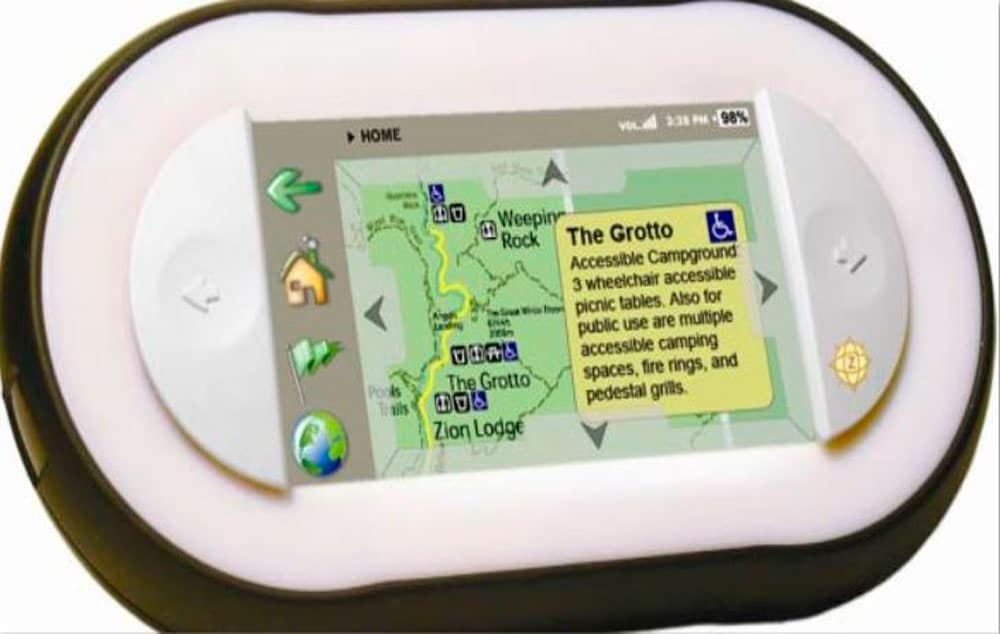With summer around the corner, you are likely starting to consider options for family vacations that are wheelchair accessible. National parks and public lands offer visitors a wealth of benefits including beautiful scenery, plenty of culture and history, as well as an economic alternative that fits any budget.
And there is good news for people with disabilities: meeting ADA guidelines by expanding access to public lands has become a higher priority for the National Parks. Additionally, with the new generation of assistive technology that is becoming increasingly available, accessible national parks are growing in number and the types of adaptive services are expanding.
GPS Tour Guides Support Adaptive Recreation
GPS multimedia tour guide devices are one such assistive technology that is expanding access and helping to ensure that all visitors to public lands have a fulfilling experience. GPS tour guide devices use GPS (Global Positioning System) satellite signals to detect where visitors are within a venue, which in turn triggers interpretive content based on their location to explain what they are seeing and experiencing. Several features can exist on these systems that support adaptive recreation.
Automatically Triggered Content Provides Hands Free Experience
First, the automatic triggering of interpretive content is a major benefit for mobility impaired visitors. Each point of interest within a venue that has an associated story will be pre-loaded into the system with a linked GPS coordinate.
As a visitor approaches this area, the GPS antenna in the device triggers the audio, video or interactive media content automatically. There is no need to manually punch-in numbers or navigate through menus to receive the unique stories, history or anecdotes that give places special meaning and context – they are automatically launched on the unit based on the visitor’s location. This frees the visitor’s hands from needing to manually manipulate the device in order to enjoy an interpretive tour.
Interactive Maps Assist People with Disabilities
Interactive GPS maps enable venues to offer geo-referenced information about a park’s facilities and amenities, as well as their specific locations within the venue. This feature has excellent applications for people with disabilities.
For example, wheelchair accessible trails, ramps, restrooms, accessible fire rings and picnic tables can all be tagged on maps with information about available numbers and access points. Up to the minute identification of the user’s location assists with travel through and around the venue. Visitors know where they are with a dynamic map icon and how far away and in what direction points of interest are located.
Additional Support for People with Disabilities
GPS multimedia tour guide devices also offer benefits for visitors that are hard of hearing or visually impaired. Interpretive content can be delivered in sign language and captioning, so that the deaf or hard of hearing visitor can benefit from the same independent, high-tech tour experience that other visitors enjoy. Audio description and audio directional cues can be programmed for the visually impaired as well.
Assistive Technology is Expanding
It is clear that technology advances have been improving the possibilities for adaptive recreation in all types of settings. Last July a congressional Subcommittee on National Parks, Forests and Public Lands met for an oversight hearing on “Expanding Access to Federal Lands for People with Disabilities” to examine strategies and products to make this a reality.
At that time, the GPS Ranger® multimedia tour guide device, which made national news when introduced at Philadelphia’s Independence Hall in July 2008, was presented as just one example of GPS technology currently being utilized on public lands to assist those with disabilities. While still in early stages of adoption, the future looks bright for continued acceptance and introduction of assistive technology for people with disabilities in our national park system.
Source: Disaboom



